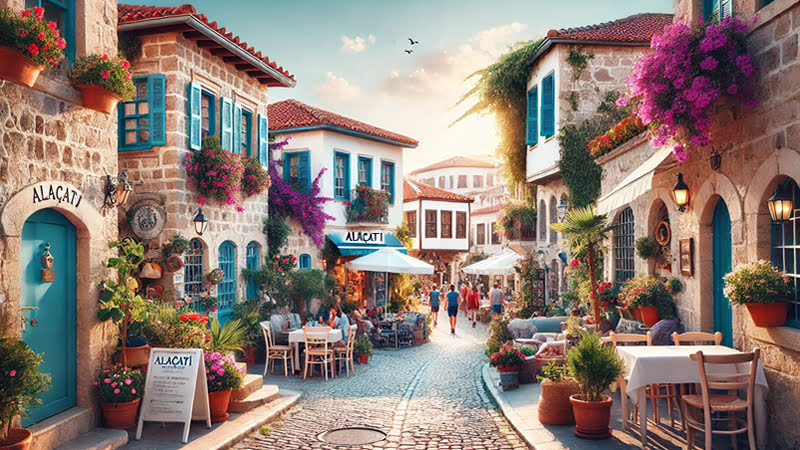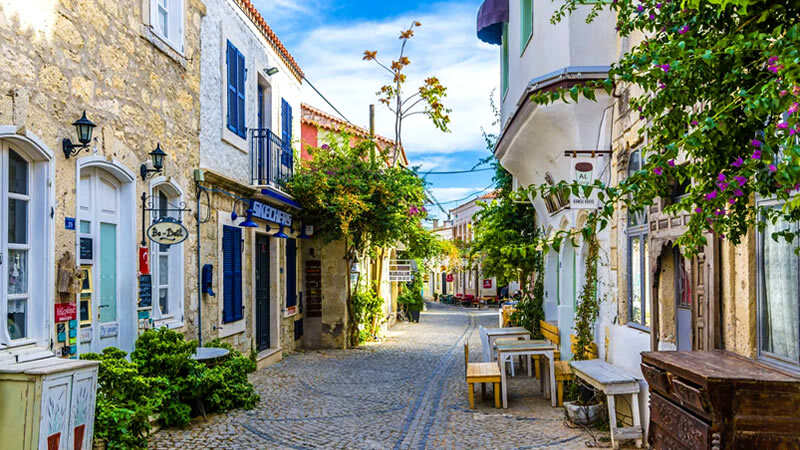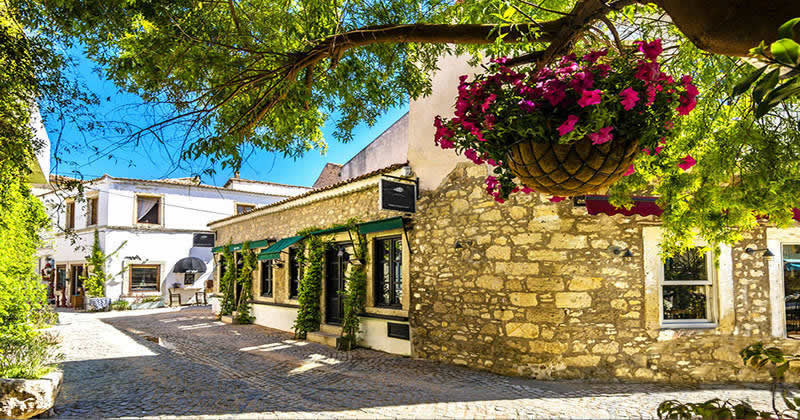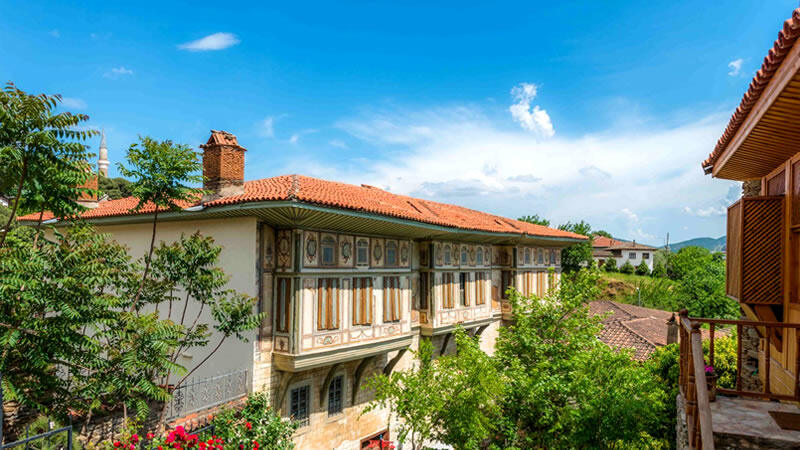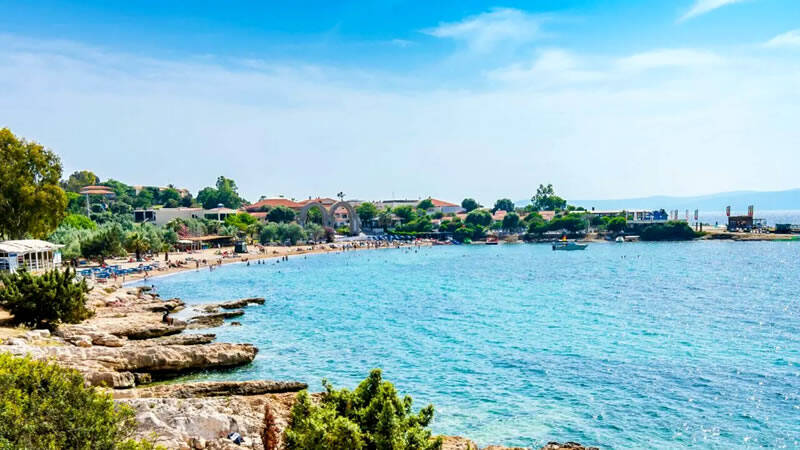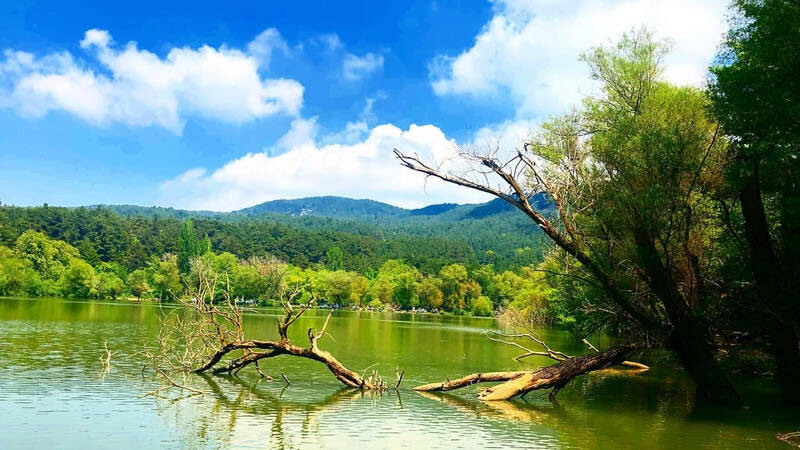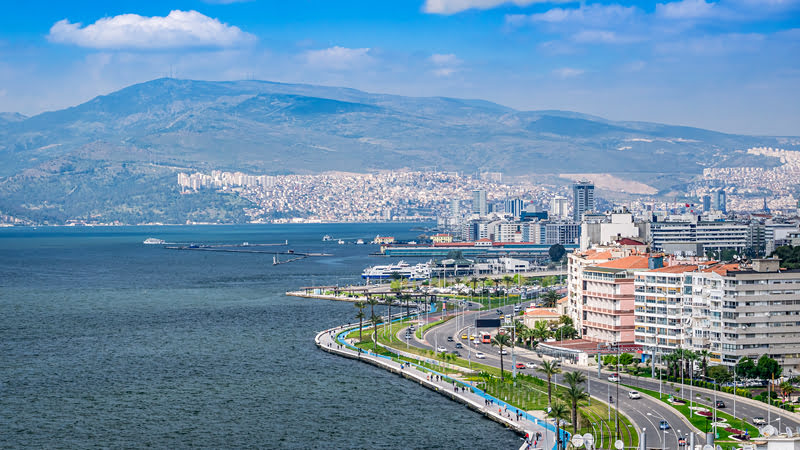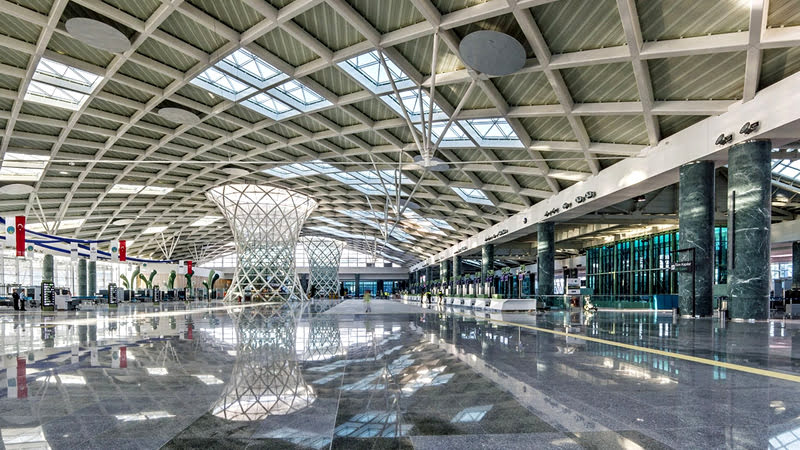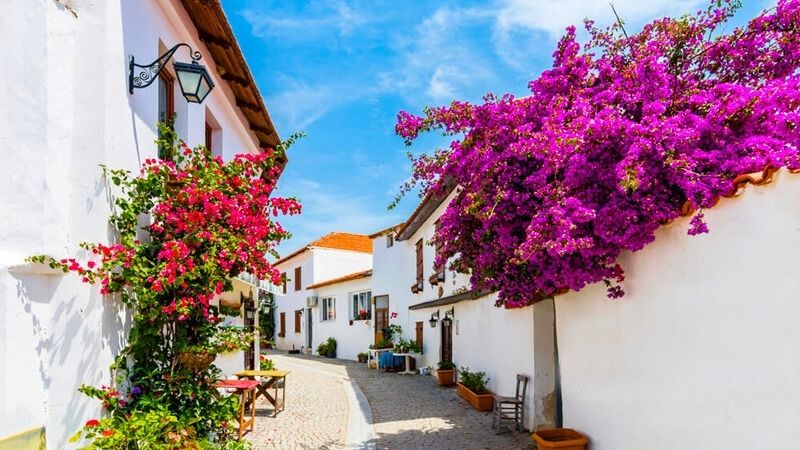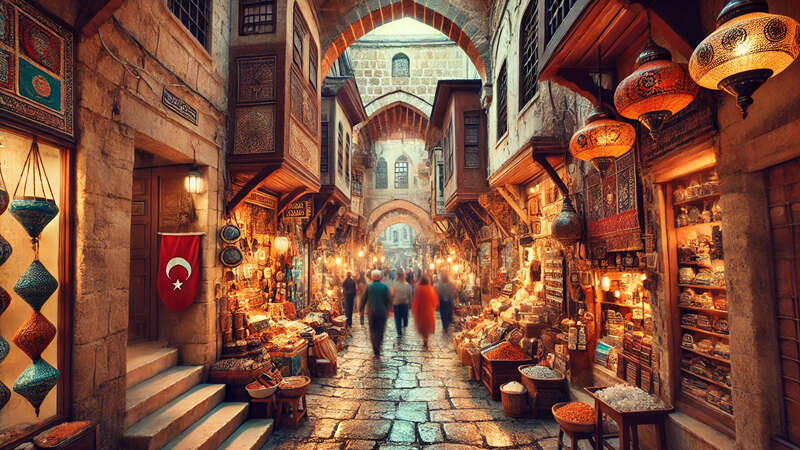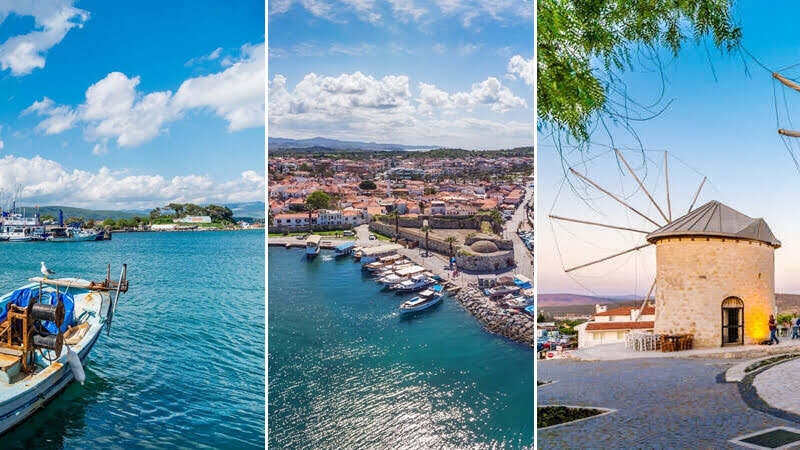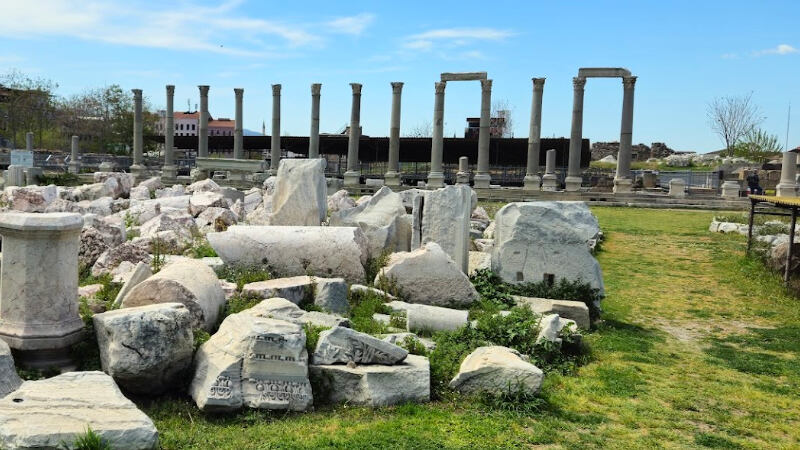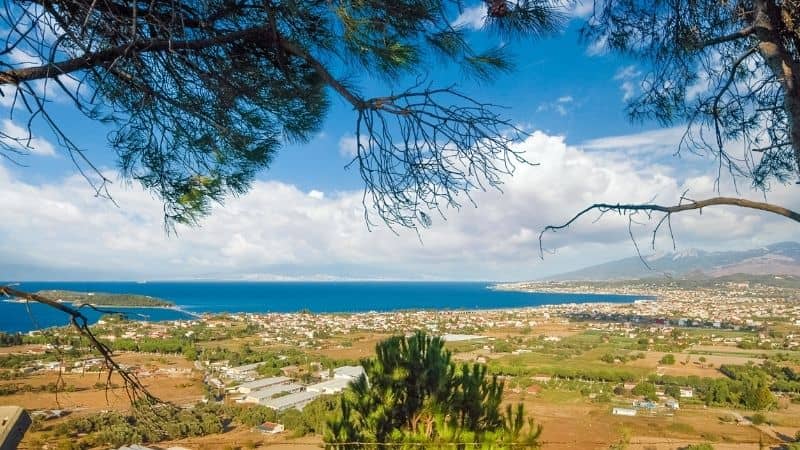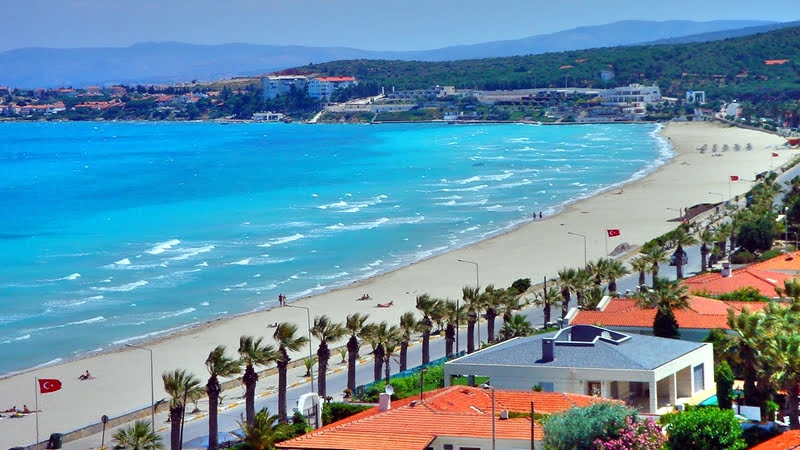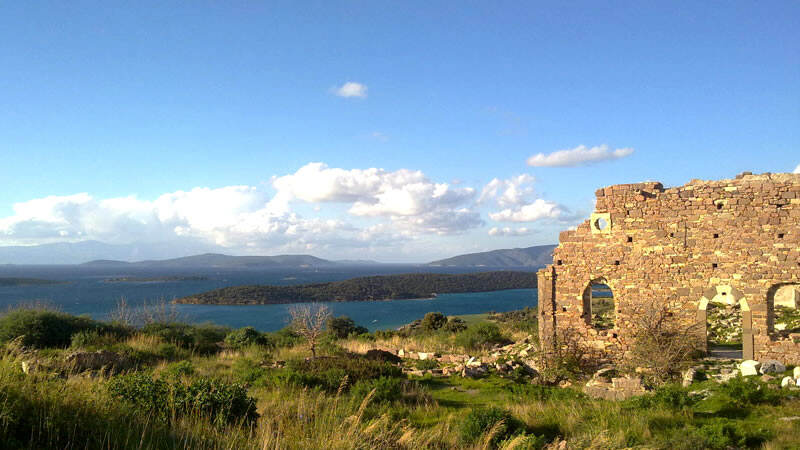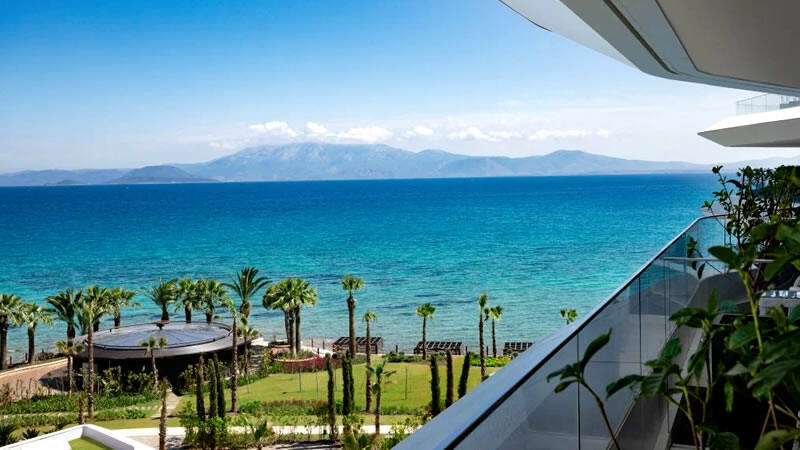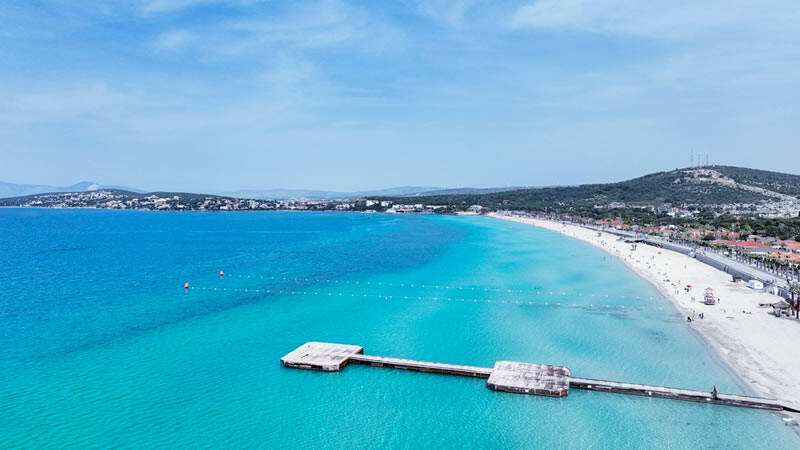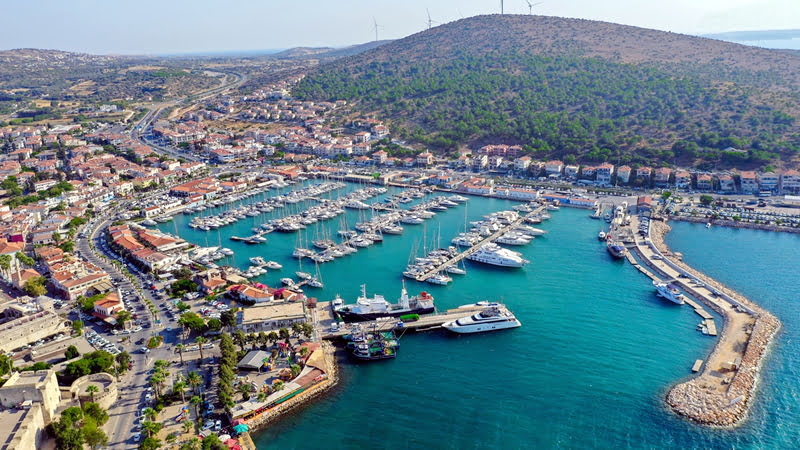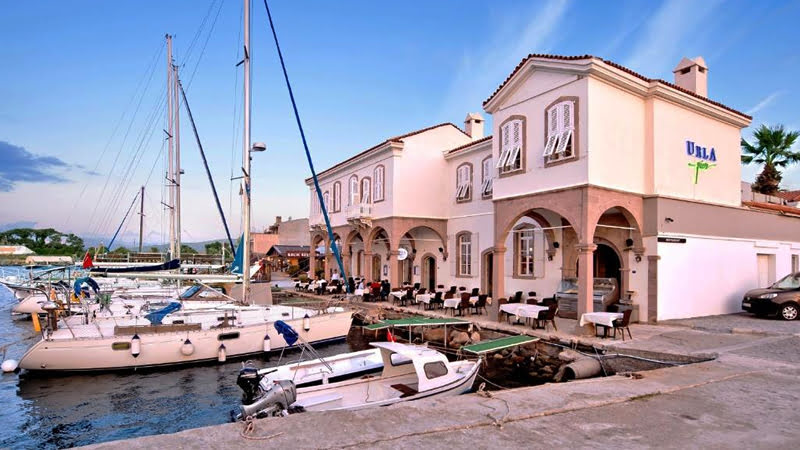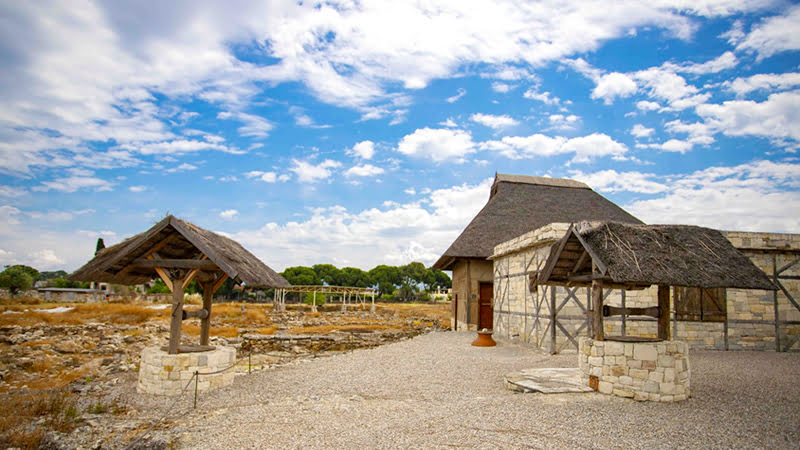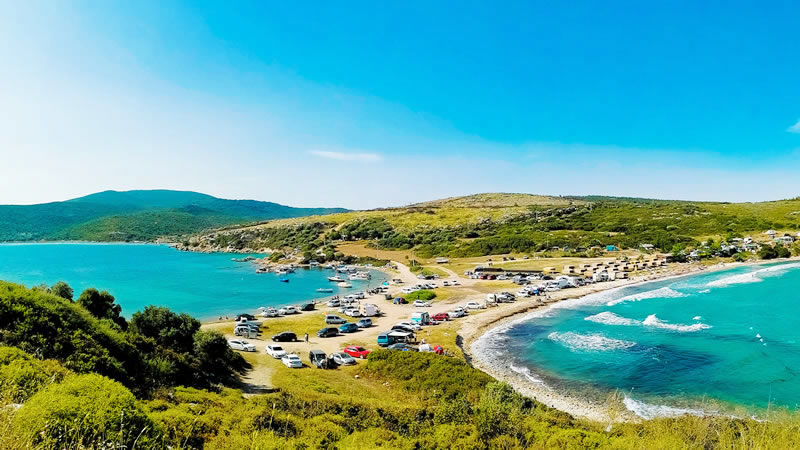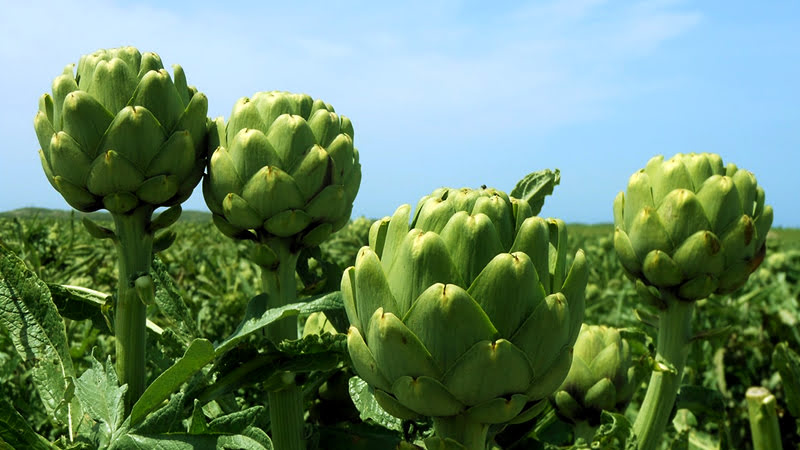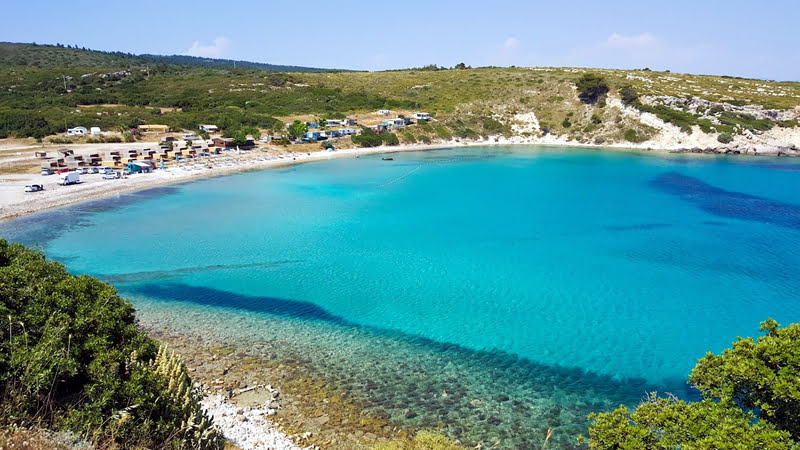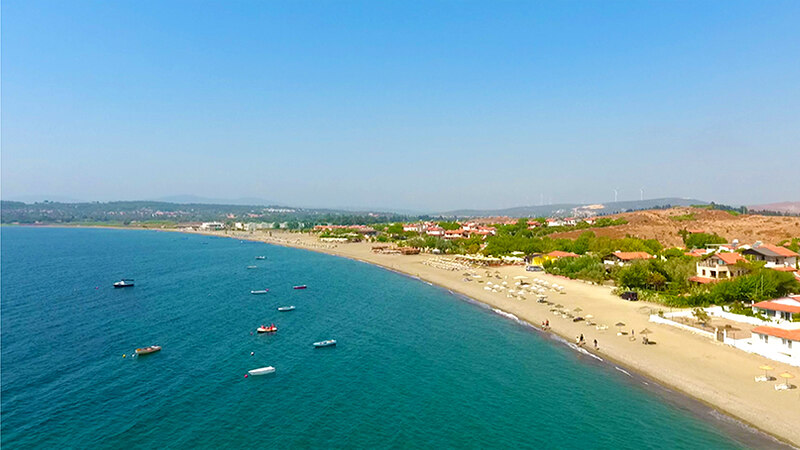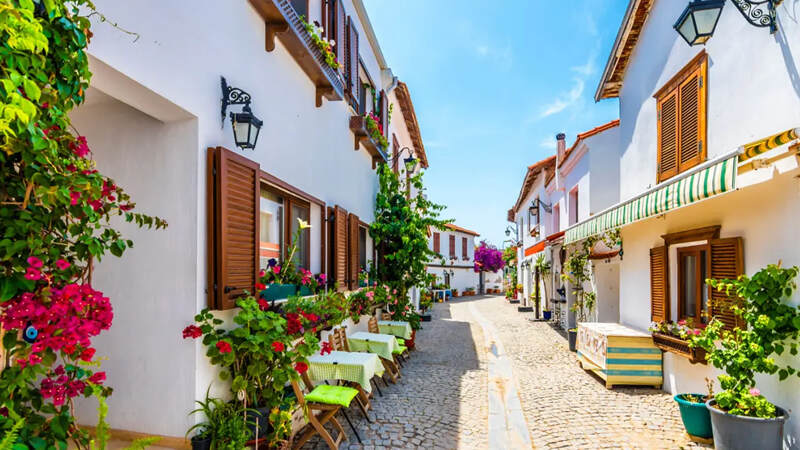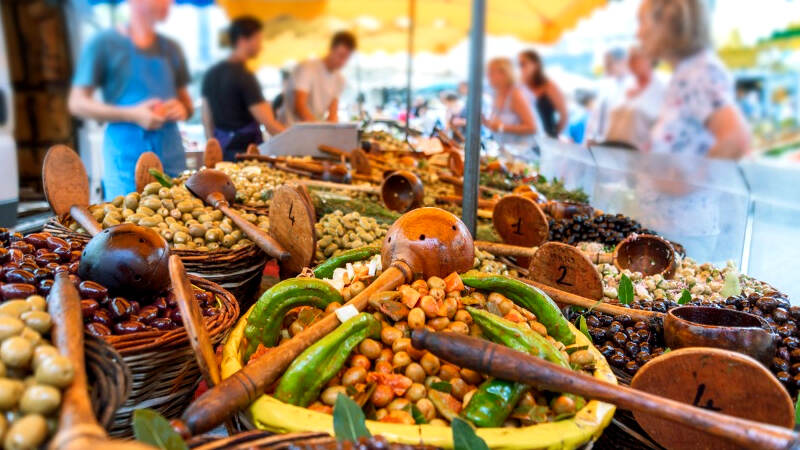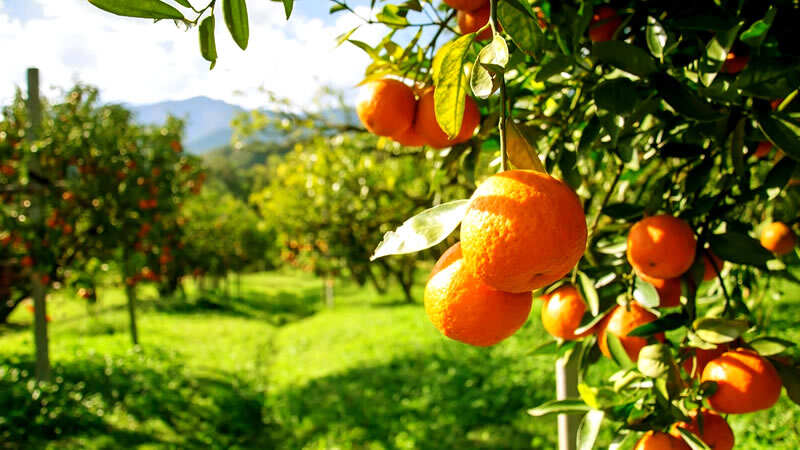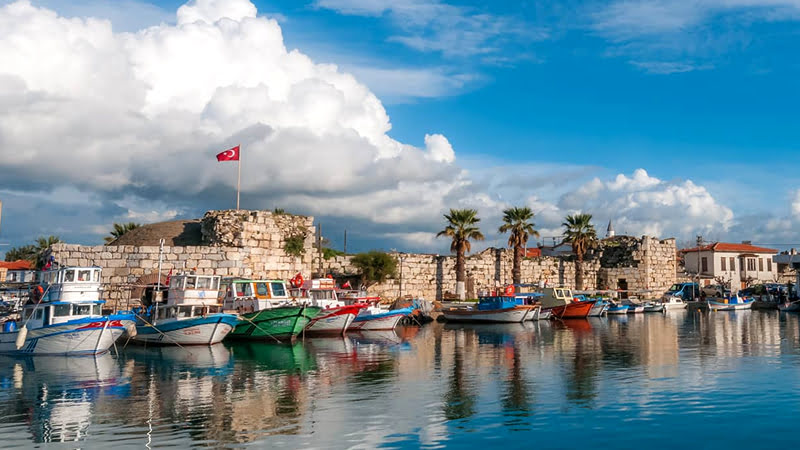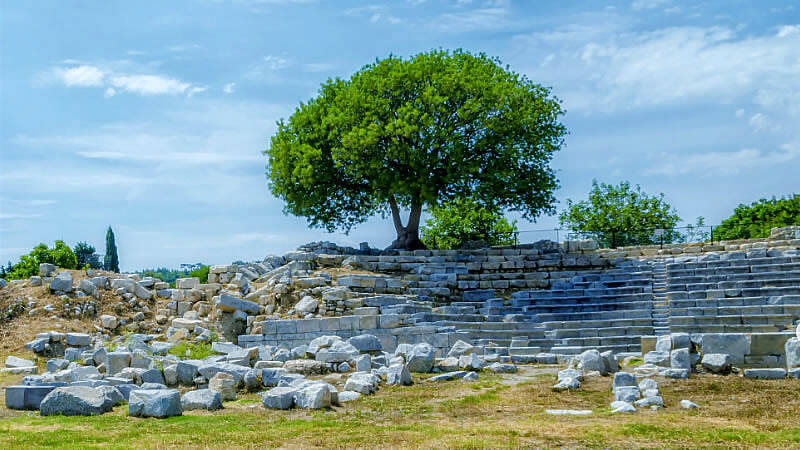A Journey Through History and Culture in Alacati, the Charm of the Aegean
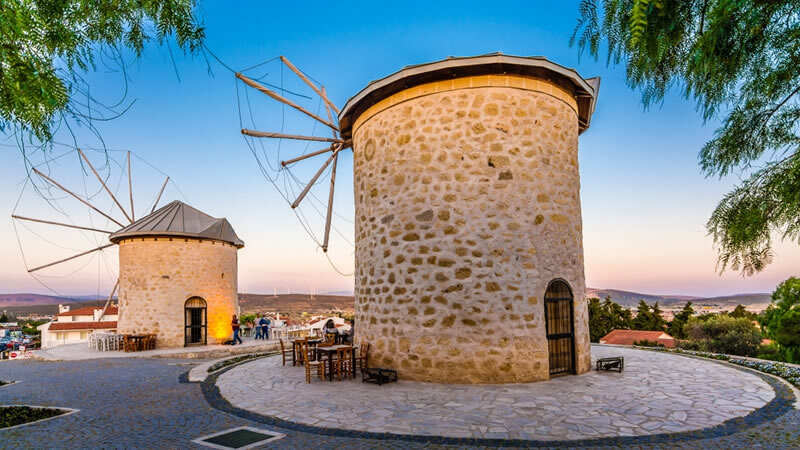
Among the breathtaking holiday destinations of the Aegean Region, Alacati stands out with its blue seas, wind-dancing windmills, and elegant stone houses. However, Alacati’s true wealth lies not only in its natural beauty but also in its centuries-old history and cultural texture that preserves traces of the past to this day. Walking through the narrow streets under the shade of stone houses meticulously built by Greek architecture offers visitors a unique journey through history. This small town, where Ottoman and Greek cultures intertwine on every corner, holds deep meaning both architecturally and culturally.
The stone houses of Alacati showcase not only aesthetic appeal but also the craftsmanship of artisans. These houses were built with high ceilings and thick walls to keep cool during summer days. These aesthetic details elevate Alacati from being a mere tourist attraction, allowing visitors to deeply feel the region’s rich cultural heritage.
In this article, get ready for an enjoyable journey into the unique world of Alacati, with streets blending Ottoman and Greek influences, timeless structures, and ongoing cultural festivals.
The history of Alacati traces back to Ancient Greece. Known as "Agrilia" in antiquity, Alacati was an important settlement due to its fertile agricultural lands. However, the Alacati we see today was more shaped during the Ottoman Empire period. In the 19th century, Alacati served as one of the empire's western gateways and played a vital role as a hub for agriculture and trade. The Greek population left significant traces on Alacati’s architecture and cultural structure during this time. The stone houses and narrow streets of Alacati bear the marks of this period.
In the mid-19th century, Alacati experienced a major population shift. To drain the marshes and expand agricultural land, the Ottoman Empire settled Greeks from Chios in Alacati. This population change greatly influenced Alacati's cultural texture and architecture. With the 1923 population exchange, the Greek population moved to Greece, and the Turkish population from Greece settled in Alacati, resulting in a transformation of the area and a new cultural composition.
The architectural texture of Alacati was shaped by the different cultures that coexisted in these lands for centuries. In this town, where Ottoman and Greek influences converge, each stone house and historical structure reflects the lifestyle and architectural understanding of its era.
Another distinctive feature of Alacati houses is the small, well-tended gardens in front of the houses. These gardens complete the aesthetics of the houses, bringing together natural beauty and structural elegance. These green spaces, harmonizing with Alacati's landscape, play an important role in preserving the town's natural texture. At the same time, these gardens integrate the houses with the outdoors as part of social life.
The cultural richness of Alacati extends beyond its architecture. The local population maintains traditional handicrafts and culinary culture. Various festivals held in Alacati provide wonderful opportunities to celebrate this cultural heritage. Especially the Alacati Herb Festival, which focuses on local herbs and plants, reflects the region’s agricultural history and culinary culture. This festival draws thousands of visitors to Alacati each year and showcases the region’s cultural wealth.
The culinary culture of Alacati reflects the Aegean Region’s rich gastronomic heritage. Olive oil-based dishes, seafood, and fresh herbs are indispensable in Alacati's cuisine. Local restaurants in Alacati offer these delicacies, providing visitors with an unforgettable gastronomic experience. Fresh vegetables and herbs sold in Alacati’s market reflect the area’s agricultural background.
Alacati’s handicrafts are also part of the region’s cultural richness. Handmade woven rugs and lacework, crafted in Alacati’s stone houses, demonstrate the local population's commitment to traditional crafts. These handicrafts serve as valuable souvenirs for both locals and tourists.
Alacati car rental and transfer services are among the best options for those who want to explore the area comfortably and effortlessly.
The stone houses of Alacati showcase not only aesthetic appeal but also the craftsmanship of artisans. These houses were built with high ceilings and thick walls to keep cool during summer days. These aesthetic details elevate Alacati from being a mere tourist attraction, allowing visitors to deeply feel the region’s rich cultural heritage.
In this article, get ready for an enjoyable journey into the unique world of Alacati, with streets blending Ottoman and Greek influences, timeless structures, and ongoing cultural festivals.
Alacati's Deep-rooted History
The history of Alacati traces back to Ancient Greece. Known as "Agrilia" in antiquity, Alacati was an important settlement due to its fertile agricultural lands. However, the Alacati we see today was more shaped during the Ottoman Empire period. In the 19th century, Alacati served as one of the empire's western gateways and played a vital role as a hub for agriculture and trade. The Greek population left significant traces on Alacati’s architecture and cultural structure during this time. The stone houses and narrow streets of Alacati bear the marks of this period.
In the mid-19th century, Alacati experienced a major population shift. To drain the marshes and expand agricultural land, the Ottoman Empire settled Greeks from Chios in Alacati. This population change greatly influenced Alacati's cultural texture and architecture. With the 1923 population exchange, the Greek population moved to Greece, and the Turkish population from Greece settled in Alacati, resulting in a transformation of the area and a new cultural composition.
Ottoman and Greek Architecture
The architectural texture of Alacati was shaped by the different cultures that coexisted in these lands for centuries. In this town, where Ottoman and Greek influences converge, each stone house and historical structure reflects the lifestyle and architectural understanding of its era.
Characteristics and Aesthetic Details of Alacati's Stone Houses:
The stone houses in Alacati attract attention not only for their aesthetic appearance but also for their functional features. To counteract the hot summer climate, high ceilings and thick stone walls were used, creating a cool living space indoors. One of the most notable features of Greek architecture in Alacati is the meticulous craftsmanship and vibrant colors on the facades of houses. Wooden balconies, windows, and doors add a distinctive elegance to the area. These architectural details transform Alacati into a cultural heritage rather than just a residential area. On every street, you can find structures carrying traces of the past. The stone houses carefully built by Greek artisans are among the key elements shaping the town's current image.Another distinctive feature of Alacati houses is the small, well-tended gardens in front of the houses. These gardens complete the aesthetics of the houses, bringing together natural beauty and structural elegance. These green spaces, harmonizing with Alacati's landscape, play an important role in preserving the town's natural texture. At the same time, these gardens integrate the houses with the outdoors as part of social life.
Ottoman-era Structures: Haci Memis Aga Mosque and Fountain:
Alacati is also enriched by religious and social structures from the Ottoman era. Haci Memis Aga Mosque, one of the most remarkable examples of this architectural texture, stands out with its simplicity while also being adorned with elegant details, reflecting the architectural style of the Ottoman period. The stone walls and garden around the mosque contribute to the town's peaceful atmosphere. Another important structure from the Ottoman period is the Haci Memis Fountain, which was built to meet the local population's water needs and still remains a part of the town's historical texture.Alacati's Historical Structures
Alacati Windmills and the Story of the Wind:
The historical windmills located on the hills of Alacati are another important element of the town's past. Originally used for grinding grain, these mills have now become iconic structures in Alacati. Located at high points, these windmills attract visitors not only with their historical functionality but also with their aesthetic value.Old Greek Churches Transformed into Cultural and Art Centers:
Some old Greek churches in Alacati have been repurposed as art galleries and cultural centers, contributing to the town's cultural heritage. These buildings display Alacati’s cultural richness. The Alacati Pazaryeri Mosque, in particular, was converted from an old Greek church. This mosque carries traces of both Christian and Muslim architecture and serves as a beautiful example of cultural fusion.Inns and Baths from the Ottoman Era:
Walking through Alacati’s streets, you’ll come across old inns and baths that complete the historical texture of the town. Alacati Bath, an important structure from the Ottoman period, is especially notable. It is used by both locals and tourists and reflects the traditional lifestyle of Alacati.Cultural Riches
The cultural richness of Alacati extends beyond its architecture. The local population maintains traditional handicrafts and culinary culture. Various festivals held in Alacati provide wonderful opportunities to celebrate this cultural heritage. Especially the Alacati Herb Festival, which focuses on local herbs and plants, reflects the region’s agricultural history and culinary culture. This festival draws thousands of visitors to Alacati each year and showcases the region’s cultural wealth.
The culinary culture of Alacati reflects the Aegean Region’s rich gastronomic heritage. Olive oil-based dishes, seafood, and fresh herbs are indispensable in Alacati's cuisine. Local restaurants in Alacati offer these delicacies, providing visitors with an unforgettable gastronomic experience. Fresh vegetables and herbs sold in Alacati’s market reflect the area’s agricultural background.
Alacati’s handicrafts are also part of the region’s cultural richness. Handmade woven rugs and lacework, crafted in Alacati’s stone houses, demonstrate the local population's commitment to traditional crafts. These handicrafts serve as valuable souvenirs for both locals and tourists.
Transportation Services in Alacati
Alacati car rental and transfer services are among the best options for those who want to explore the area comfortably and effortlessly.


